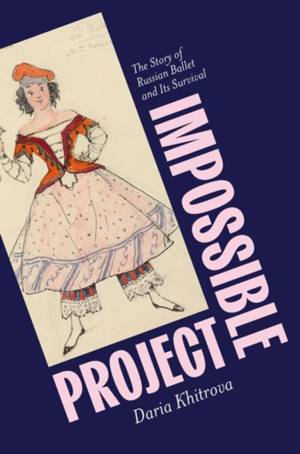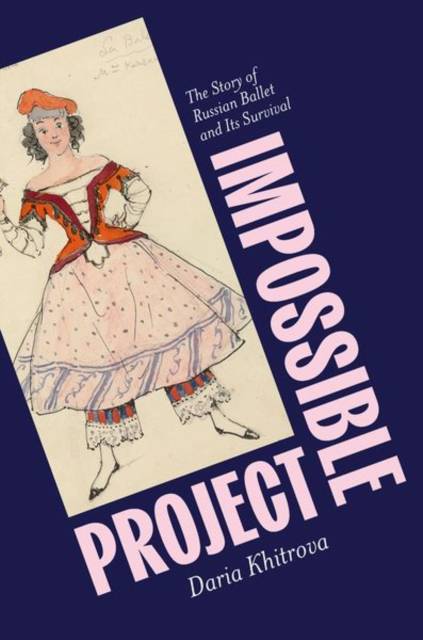
- Retrait gratuit dans votre magasin Club
- 7.000.000 titres dans notre catalogue
- Payer en toute sécurité
- Toujours un magasin près de chez vous
- Retrait gratuit dans votre magasin Club
- 7.000.0000 titres dans notre catalogue
- Payer en toute sécurité
- Toujours un magasin près de chez vous
Impossible Project
The Story of Russian Ballet and Its Survival
Daria Khitrova
Livre relié | Anglais
64,45 €
+ 128 points
Description
Writing in 1829, a Russian critic referred to the art of ballet as an "impossible project"--impossible because it strives "to give an expressive language to body movements," while completely avoiding spoken dialogue. This impossibility generated an anxiety that, no less than the balletic triumphs typically addressed in historiography, has been fuelling ballet's existence to this day. Some critics of ballet, like Leo Tolstoy, were eager to see this art discontinued for good, which indeed could have happened. Impossible Project follows the ballet debates from the mid-nineteenth to mid-twentieth century, showing that it was the energy of survival, particularly felt by the French-trained ballet masters working in Russia, that turned ballet into something like a religion for its practitioners. The modernist dissent of the early twentieth century only reinforced the near-religious devotion to ballet, which was in turn carried back to the West by Russian ballet figures fleeing from the Revolution and its Soviet aftermath. Ballet--as an art form and an artwork--has always been a corporate operation whose dynamics is impossible to describe in full from a single viewpoint. Impossible Project inspects ballet in the round and explores what its image was in the mind's eye of a hardened balletomane; a nameless corps de ballet danseuse; a politically driven administrator; or a progressive-minded journalist and writer. Author Daria Khitrova puts Russian ballet in the context of the political, religious, and aesthetic debates of its times, and examines it as a changing institution looking from both the wings and the audience.
Spécifications
Parties prenantes
- Auteur(s) :
- Editeur:
Contenu
- Nombre de pages :
- 304
- Langue:
- Anglais
Caractéristiques
- EAN:
- 9780197653050
- Date de parution :
- 17-07-25
- Format:
- Livre relié
- Format numérique:
- Genaaid
- Dimensions :
- 169 mm x 236 mm
- Poids :
- 594 g

Les avis
Nous publions uniquement les avis qui respectent les conditions requises. Consultez nos conditions pour les avis.






